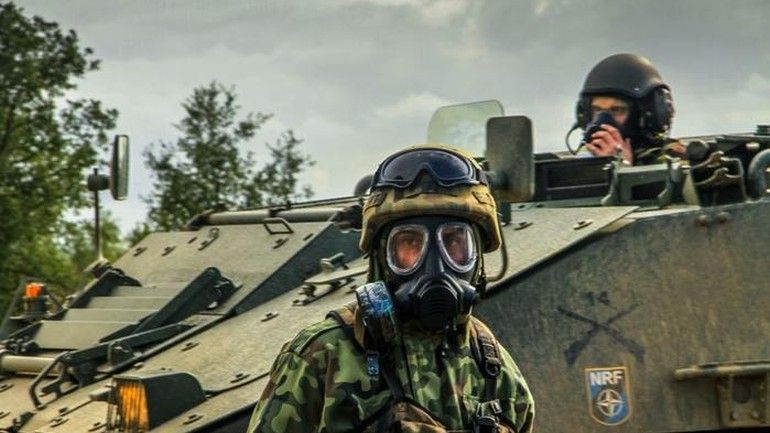Polish Chemical Warfare Units Leading The NATO Response Force. Last Phase Of The Largest NATO Exercise

Polish Chemical Corps are involved in the NATO Trident Juncture 2015 exercise, that is a part of the year 2016 certification process for the NATO Response Force component. The operation is the largest NATO military exercise since a decade. The event involves more than 36 thousand troops coming from the NATO member states, and from the partner nations.
Trident Juncture 2015 exercise is the largest NATO military exercise this decade. The operational activities are being undertaken within the territories of Spain, Portugal, Italy, and on the waters of the Atlantic Ocean and the Mediterranean Sea. The exercise involves units that are going to form the NATO Response Force component in 2016. One of the main roles in the Response Force is played by the Polish soldiers, as they are a core component of the multinational ABC weapons protection battalion.
The aforesaid unit consists of more than 500 soldiers, coming from 9 countries, including Poland, Bulgaria, Czech Republic, Denmark, Romania, Slovenia, Hungary, the United Kingdom and Italy. The Poles constitute the core of the element, since ca. 340 Polish troops are in service within the Battalion. Also, most of the equipment used by the unit also comes from Poland. Generally, the Polish part of the unit comes from 18 individal units and organs.
The Battalion deployed an ABC weapons protection Task Group, commanded by Lt. Col. Piotr Wachna, commander of the 2nd Chemical Battalion of the 4th Chemical Regiment in Brodnica, along with a Joint Team for Contamination Assessment, commanded by Lt. Col. Marcin Kloske of the ABC Weapons Protection Management of the Polish General Command of the Armed Forces. The Task Group, acting under jurisdiction of the commander of the exercise, operates in line with the rules often followed in civil-military cooperation and operational communications. Meanwhile, the Contamination Assessment Team is a consulting body for the commander of the operation. The team involves professionals in the fields of microbiology, chemistry, radiology, toxicology or advanced ABC protection. The said group of professionals deals with the process of modelling, when it comes to the contamination and spread of the toxic substances within the monitored territory.
The leading role taken by the Poles in the ABC weapons protection area is not an accident, since Polish units of this type are considered to be the elite elements, within the area of protection against the weapons of mass destruction. Back in 2009, Polish soldiers were in charge of the previous initiative of this type. Involvement of the Polish Chemical Corps extends beyond the exercise, since the soldiers were also carrying out real life operational scenarios, e.g. during the Athens Olympic Games or during the Riga NATO summit.
Trident Juncture 2015 exercise has begun on 3rd October. The operational activities are scheduled to last until 6th November. Besides the chemical warfare units, the exercise also involves the Polish pilots of the 2nd Tactical Aviation Wing and 3rd Airlift Wing, and Polish units of the Support Inspectorate and the Gendarmerie.
The exercise – in total – involves 36,000 troops from more than 30 countries, including some personnel coming from the NATO partner nations. The soldiers are supported by 140 fixed-wing and rotary-wing aircraft (including the Polish F-16 jets) and 60 Navy ships. This is the largest NATO exercise since 10 years. The scenario has been modified, in the light of the threat posed by Russia.
The operations involve, among other units, a battalion from the Baltic republics, which is being trained within the scope of anti-tank operations against a Spanish mechanized battalion, equipped with the Leopard 2 main battle tanks. Portuguese land forces air defence component also participates in the operations. The exercise also involves some US armoured units, utilizing the equipment deployed in Europe, within the framework of reinforcing the US Army’s European Presence.



